AAC Goes to High School: The Power of Peers
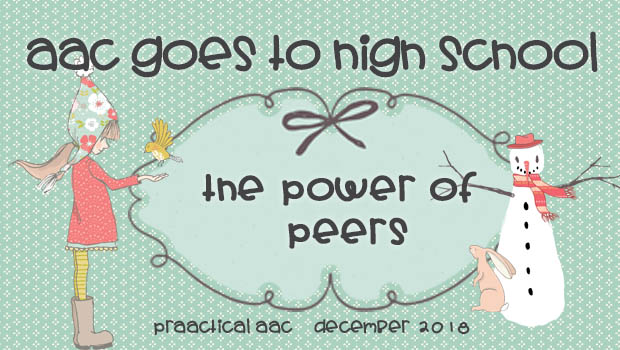
We’re so pleased to welcome back Sarah Mueller, who teaches high school students with intellectual and developmental disabilities in Rochester, Michigan. In this post, she shares her experiences in working with peer mentors and how she has helped to facilitate meaningful relationships between students with and without disabilities.
Don’t miss her video or the links to download some of the materials they used. Enjoy!
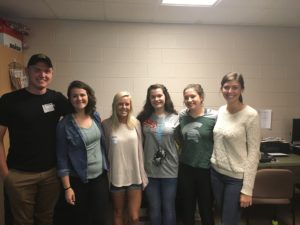
The Power of Peers
We often talk about the functions of communication and their importance in developing and expanding the students’ communicative 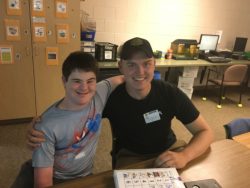 repertoire. Moving beyond requesting to protesting, commenting, and greeting and other functions is often the focus. But as high schoolers included in the school community, my students want to be social with their peers without disabilities. What does that look like for students with complex communication needs? How, as a teacher, can you structure social opportunities to teach and practice core? What is the peer perspective? Let’s get some of these questions answered thanks to my amazing peer mentors!
repertoire. Moving beyond requesting to protesting, commenting, and greeting and other functions is often the focus. But as high schoolers included in the school community, my students want to be social with their peers without disabilities. What does that look like for students with complex communication needs? How, as a teacher, can you structure social opportunities to teach and practice core? What is the peer perspective? Let’s get some of these questions answered thanks to my amazing peer mentors!
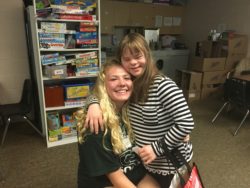 Peer mentoring is a program at my school that existed before my arrival but has continued to evolve since then. It is a class that juniors or seniors without disabilities can take during the school day. They are given assignments to learn about intellectual disabilities, inclusion, disability rights, and more. They come into the classroom or go with students to elective classes. They are just another member of the class by answering questions, displaying appropriate student behavior, and completing work. Peer mentors are role models, leaders, and most importantly friends!
Peer mentoring is a program at my school that existed before my arrival but has continued to evolve since then. It is a class that juniors or seniors without disabilities can take during the school day. They are given assignments to learn about intellectual disabilities, inclusion, disability rights, and more. They come into the classroom or go with students to elective classes. They are just another member of the class by answering questions, displaying appropriate student behavior, and completing work. Peer mentors are role models, leaders, and most importantly friends!
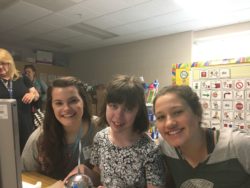 I use these peer mentors to my full advantage by having them model social communication. One way to do this is engaging in conversation about his/her weekend. This is a typical topic that adults will ask each other Monday morning at work, so it is a natural topic to use for students to practice asking questions, sharing, and commenting.
I use these peer mentors to my full advantage by having them model social communication. One way to do this is engaging in conversation about his/her weekend. This is a typical topic that adults will ask each other Monday morning at work, so it is a natural topic to use for students to practice asking questions, sharing, and commenting. 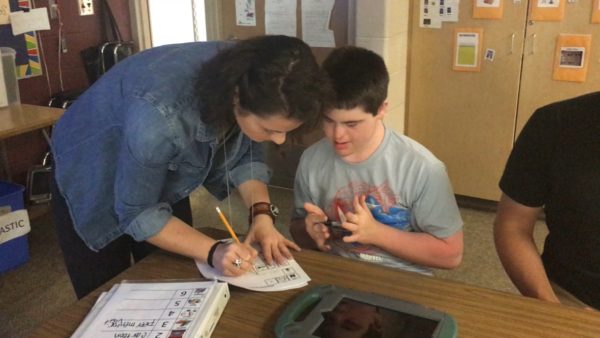
I send home a weekend news sheet with modeled core questions and phrases. I ask parents and students to complete this before coming back to school. I’ll be honest, it doesn’t always come back, but that’s okay! It makes the sharing even more novel and authentic. Students will share about their weekends by asking “What do you do?” I might ask, “Does anyone have any questions or comments about that?” to encourage additional communicative exchanges in the conversation. Yet, with peer mentors, this happens naturally as they are modeling those exchanges in the conversation (questioning to gain more information, commenting to relate to the person, etc.). 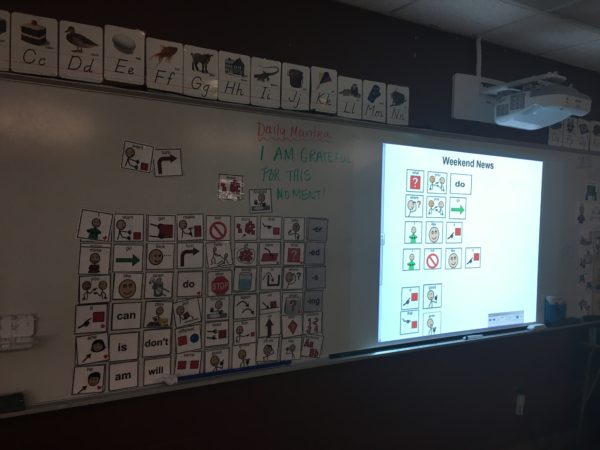
Through these social interactions, I have been able to embed core vocabulary into a non-academic time during the school day. It’s important to think about opportunities like these as it can be a time where students want to communicate the most and can be the most challenging!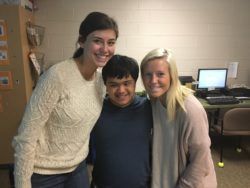
I asked some of my peer mentors what it has been like to be a peer mentor and socialize with students with complex communication needs. Here are their thoughtful, mature responses. Remember, they are only 17 or 18 years old! They are wise beyond their years and are going to be amazing advocates for people with disabilities because of this experience. Just another prime example of the power of peers and inclusion!
In the video below you can hear about it in the peer mentors’ own words.
Download our Weekend News template here.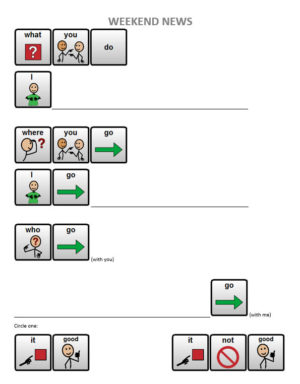
Help yourself to our Weekend Events board here.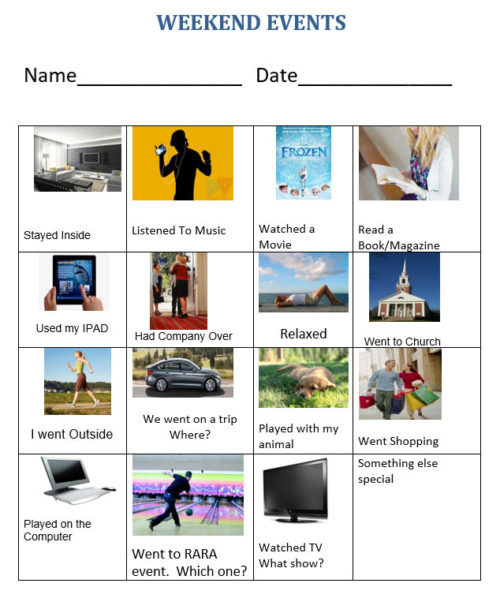
:::::::::::::::::::::::::::::::::::::::::::::::::::::::::::::::::::::::::::::::::::::::::::::::::::::::::::::::::::::::
You can read both of Sarah’s previous guest posts here.
Filed under: Featured Posts, PrAACtical Thinking
Tagged With: friendships, high school, peer mentors, school
This post was written by Carole Zangari
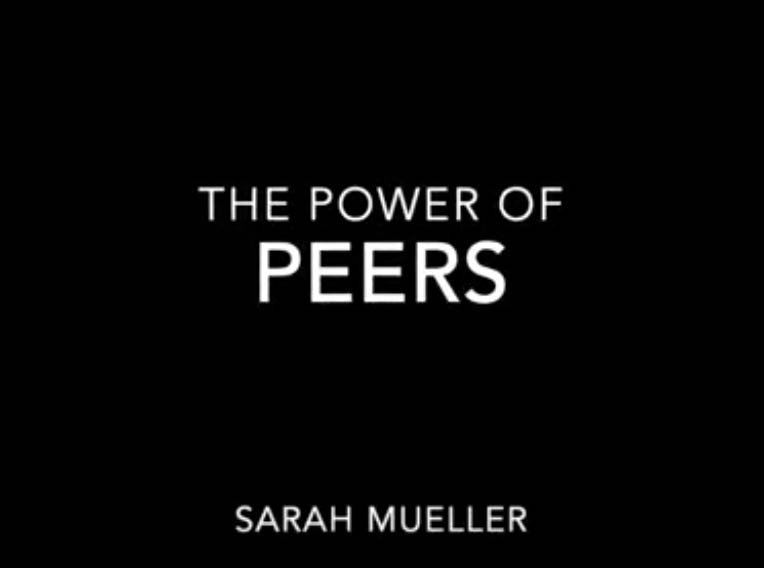

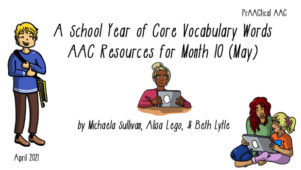
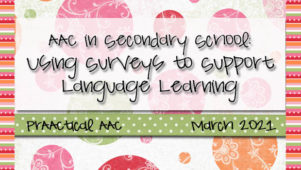
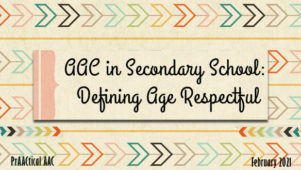
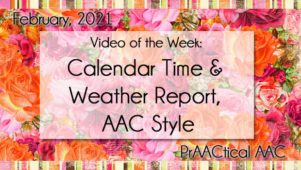
3 Comments
These posts are so helpful for our high school classrooms! Thank you so much for sharing your work!!
Thank you Vicki! Happy to share 🙂
It was such an honor to watch the impact Sarah was having on these students, peer mentors, colleagues and families. Many thanks to Dr. Zangari for always being on the look out for powerful interventions happening in schools everywhere.